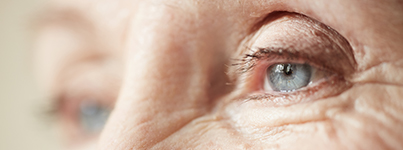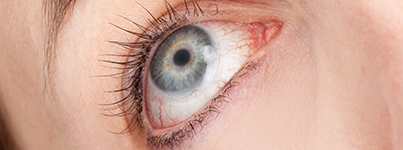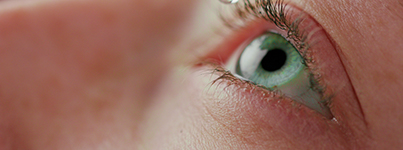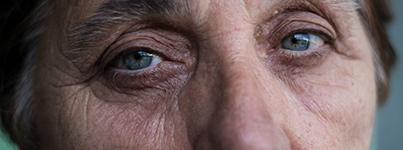Retinal Service

About Retinal Service
Susan Gelman, M.D., M.P.H. is a board-certified ophthalmologist, fellowship trained in vitreoretinal diseases. Dr. Gelman uses the latest diagnostic and therapeutic techniques to treat conditions of the retina, including age-related macular degeneration, diabetic retinopathy, retinal tears and localized detachment, retinal vein occlusions, and hereditary retinal dystrophies.
Age-related Macular Degeneration
Age-related macular degeneration (ARMD) is the leading cause of vision loss in the U.S., and is a condition that affects the central part of the retina, called the macula. The disease generally affects people over age 50, obscuring their central vision. ARMD is classified as dry when drusen, or lipoprotein deposits, accumulate underneath the retina. Atrophy of the retina can also occur in dry ARMD, which can lead to loss of vision. A combination of vitamins (AREDS 2, from the Age Related Eye Disease Study) have been shown to decrease the progression of certain types of ARMD. Macular degeneration is classified as wet when abnormal blood vessels leak, which can lead to a rapid decline in vision. The most common treatment for wet macular degeneration is an injection of a medication into the eye, sometimes given on a monthly basis, that may stop the leaking or bleeding and restore vision.


Diabetic Retinopathy
Those with type 1 or type 2 diabetes may experience vision loss due to diabetic retinopathy, which occurs when the blood vessels of the retina are damaged by excess sugar in the blood. This damage may result in leakage of fluid or blood within the retina, causing the central retina to get swollen, a condition called diabetic macular edema. This can lead to a decline in central vision. Serious damage to blood vessels and blood flow in the eye could also lead to proliferation of new blood vessels that may cause bleeding within the retina or into the gel of the eye, scar tissue formation, or detachment of the retina and loss of vision. Maintaining strict control of blood sugar levels as well as blood pressure lowers the risk of diabetic retinopathy, but in some cases, treatment is necessary to prevent the progression of the disease. Treatment options include laser procedures and injections of medication into the eye in an attempt to halt disease progression and regain vision.
Retinal Vein and Artery Occlusion
The retina is the only part of the body where you can directly visualize veins and arteries. There is a central retinal artery that branches out as the blood supply for the retina. The capillaries of the retina drain into branches of the central retinal vein, which exits thru the optic nerve. There are certain conditions that may put someone at risk of developing an occlusion of the retinal vein or artery or its branches, including high blood pressure, clotting disorders, inflammatory disorders, carotid artery disease, heart conditions and other medical conditions. Signs of a vessel occlusion include decrease in vision or loss of vision. An artery occlusion is considered a medical emergency, and needs immediate medical attention. As a consequence of a vein occlusion, bleeding can develop in the eye and swelling of the retina that can lead to a decrease in vision. The most common treatment is an injection of a medication into the vitreous gel of the eye that may stop the leakage or bleeding and allow for possible improvement in vision. Laser treatment may also be done to areas of the retina where there is poor blood flow and resulting abnormal blood vessel growth.


Cystoid Macular Edema
The center of the retina, or the macula, can become swollen with fluid, which results in cysts that cause blurring or loss of vision. The condition is painless and can occur for a variety of reasons including eye surgery, diabetes, age, inflammation or injury. Proper diagnosis can identify the underlying cause of cystoid macular edema and determine the appropriate treatment options, which include eyedrops, laser treatment or injections into the vitreous gel of the eye.
Retinal Tear and Detachment
The retina is a thin tissue that lines the inner back wall of the eye. It is a very important structure as it contains millions of nerve cells that organize visual information and send it to the brain. The retina needs to be in the correct position for proper function. If a tear develops in the peripheral retina, fluid from inside the eye can travel underneath the retina. Left untreated, there is a risk for development of a retinal detachment. Symptoms of retinal tear include flashing lights, new or increased floaters and decrease in vision. If any of these symptoms are present it is important to have an eye examination right away. Retinal tears can often be treated with a laser procedure (laser retinopexy) in the office to prevent a retinal detachment.
If the retina becomes detached, a part of the vision may become dark (a “shadow”) that could progress rapidly. A surgical procedure can be done to reattach the retina back to the proper position.


Epiretinal Membrane (Pucker)
An epiretinal membrane (ERM) is scar tissue that forms on the center of the retina, called the macula. Over time, the membrane may contract and “pucker” or wrinkle the retina, and this can cause a decrease in vision. Typical symptoms include metamorphopsia, or distortions in your vision, and blurred vision. If the membrane is mild it can be monitored with the use of an Amsler grid, and through retinal examinations and imaging. If the membrane contracts and decreases the quality of vision, a surgical procedure can be done to carefully peel the membrane off of the macula.
